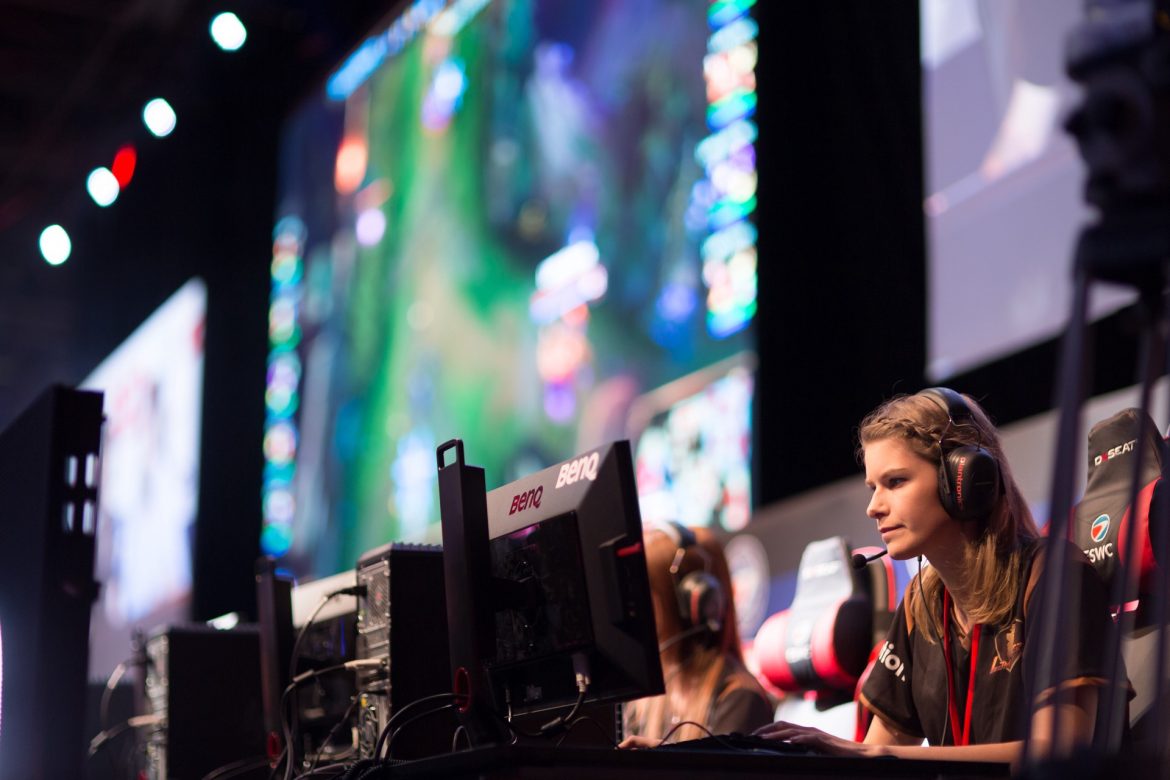eSport, with all its advantages, has a notable one that stands out when compared to other traditional sports. By definition, eSports is a sport with no major physical prejudice or differences. This means factors such as gender do not play a role in defining an athlete’s potential in the sport and balancing this playing field leaves the sport open to vast potential in terms of participants.
eSports, in its outstandingly successful uprising, has one topic of discussion that could be considered the factor defining its future growth. Women in the industry. With so much talk around the vast industry revenues, the exciting tournaments and the household name superstars, the presence of women in eSports is both underrated and not substantial enough. This essentially means that there are some truly impressive women involved in bringing this industry to new horizons, however (in my point of view), not enough of them. Taken at face value, this industry would seem to be a male-dominated sport, with mostly male athletes and figureheads in the limelight. The involvement and growth of women in eSports is a defining factor for its future, both increasing the audience size of the sport, and the pool of talent that is needed to help bring the industry to a leading position in all sports.
A large factor in the lack of presence of women is the player pool. A big reason there are less woman at higher levels of both competition and business is due to lower numbers of female players at low levels of gaming. Increasing the number of female gamers at low levels is a vital step in leveling the playing fields for women in this industry.
With most popular eSports games being internet based, an unfortunate culture of “toxicity” has developed, where anonymous gamers create a hostile environment for female gamers. Toxicity is a term used by gamers, referring to the spreading of negativity or hatred, made easier by the option of anonymity on the internet. This culture prevents women from feeling comfortable in the game, often preventing them from identifying as a female. As this industry develops, these outdated and harmful incidences are decreasing and becoming less prevalent in gaming. Implementing female-only tournaments, and the increase in the involvement of female gamers in big competitions is a powerful stepping stone to ensure women get engaged with eSports in an encouraging space, with role-models that newcomers can look up to. An increase in diversity is critical for the success of eSports, with an existing audience that is not large enough to support all the companies and growth that want and need to participate in this industry. Although there is much work to be done in this area of gaming, the female presence is rising fast, and there are some truly impressive women there to prove it.
With some highly talented female eSports athletes, and women in high-ranked roles in some major companies in the industry, there are some great role models for young female game-lovers to aspire to. From successful gamers to powerful business leaders, here are just a few of the more prominent women in eSports.
Scarlett, a StarCraft II player, is the highest earning female gamer, with over $200,000 earned in competitions so far. With over 141 tournaments under her belt, Scarlett is a true ambassador to aspiring female gamers, being called “the most accomplished woman in eSports”.
Mystik is a formidable Halo: Reach player, winning $100,000 in a single tournament! With a massive following on social media, Mystik represents the incredible potential female gamers have in this industry.
With over 1 million followers on Twitch, KittyPlays is one of the top 100 streamers on the platform. Streaming twice a day, many times playing with other big streamers, she has become one of the most famous female gamers.
These gamers are just an example of the vast potential all women have in this incredible industry. With job opportunities ranging from professional gaming, to a desk job in a gaming company, the growth of women’s presence in eSports is the next step in its evolution.

